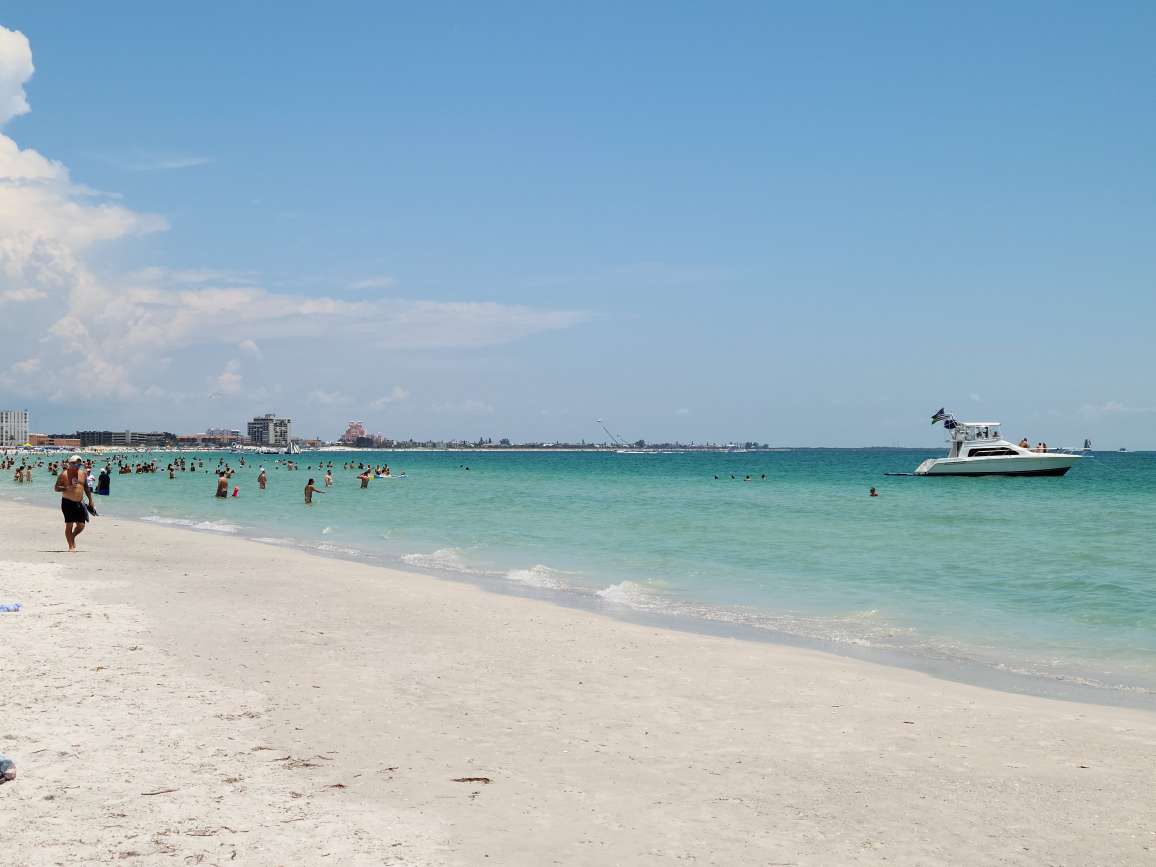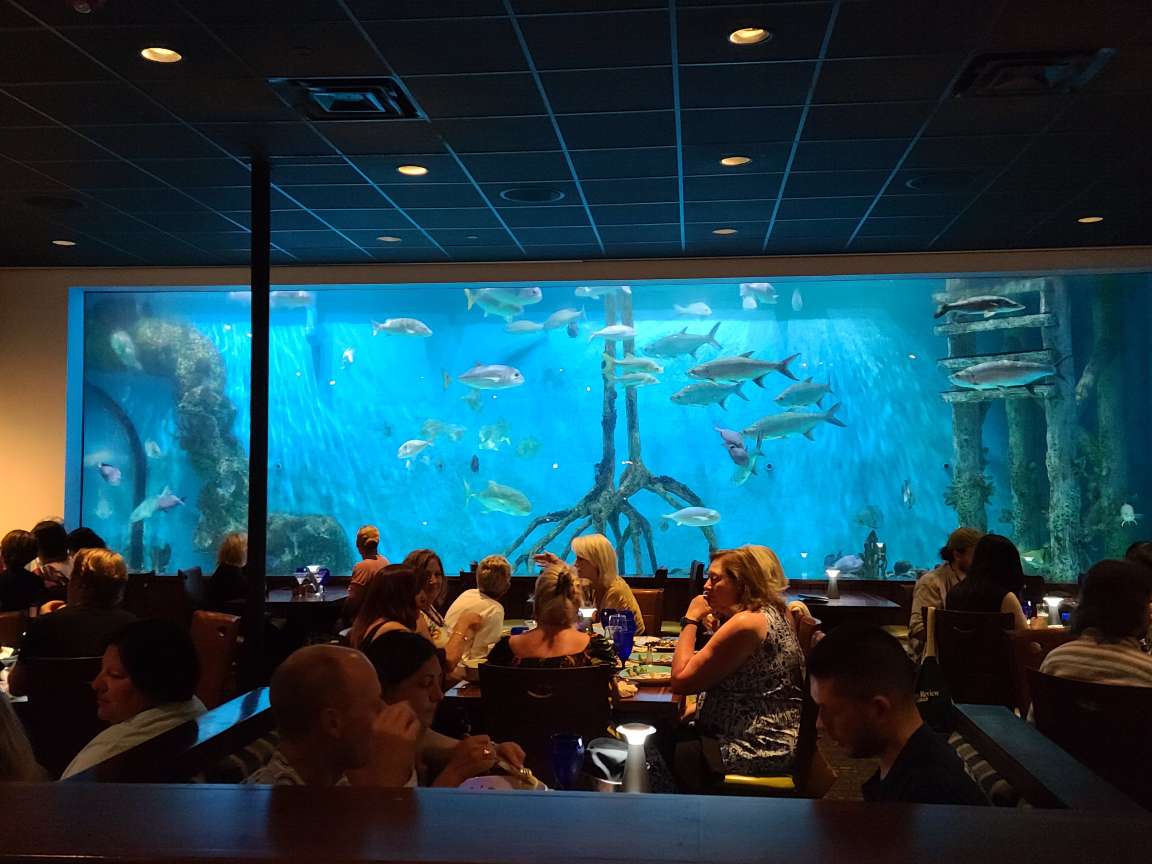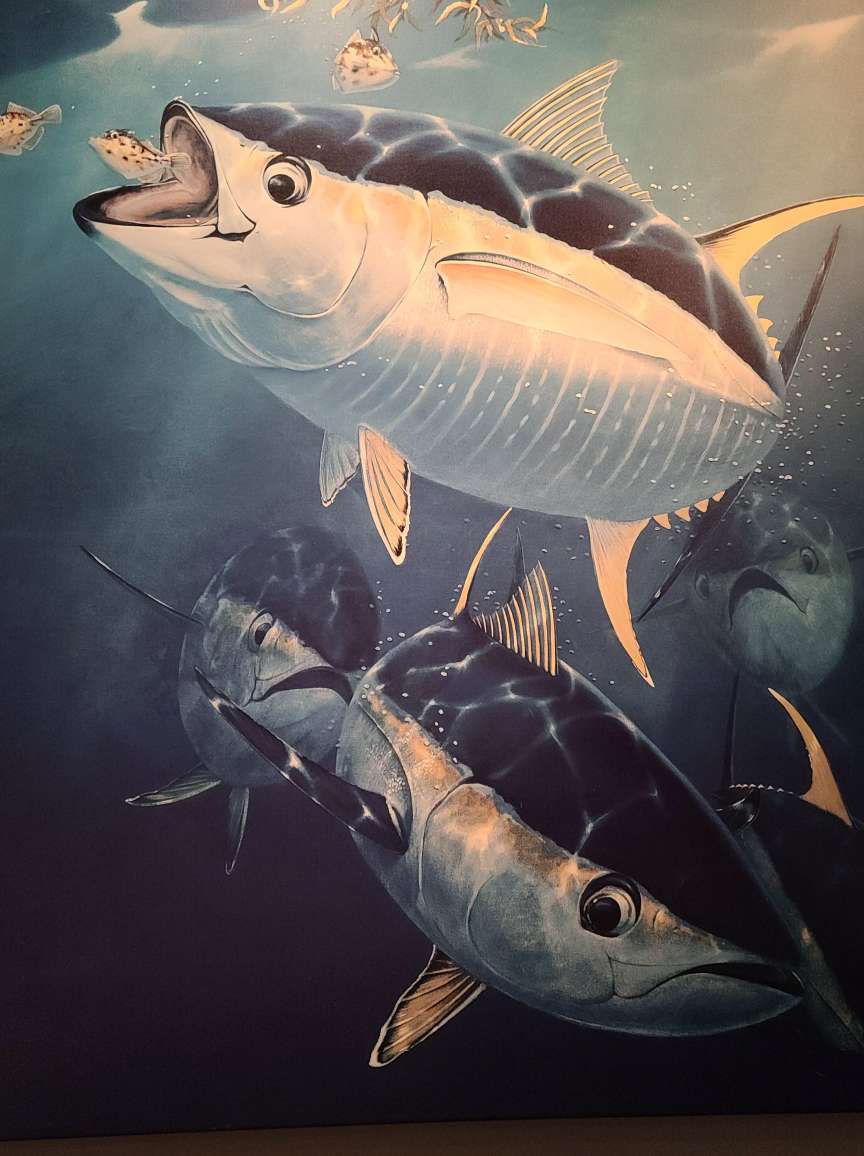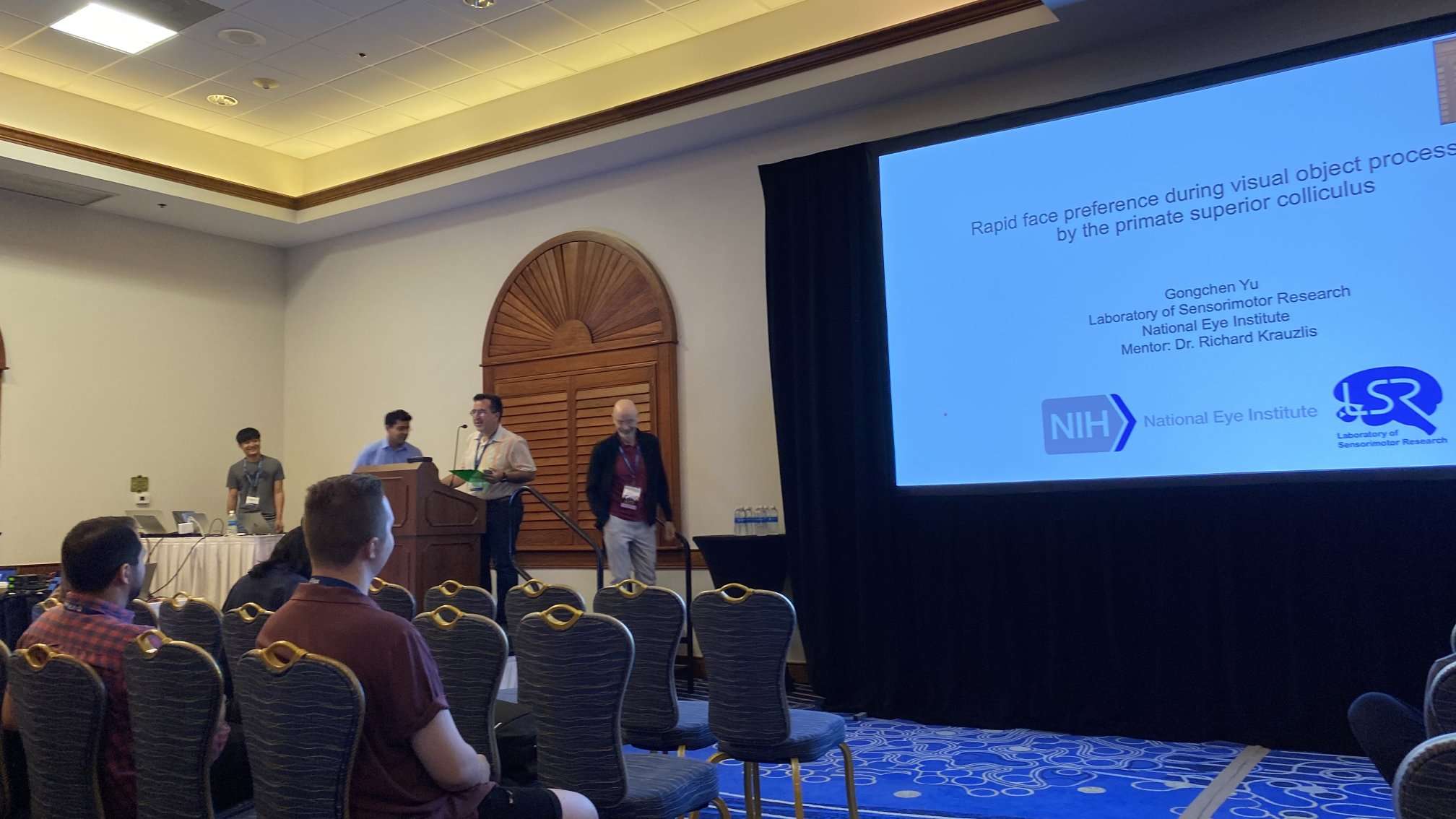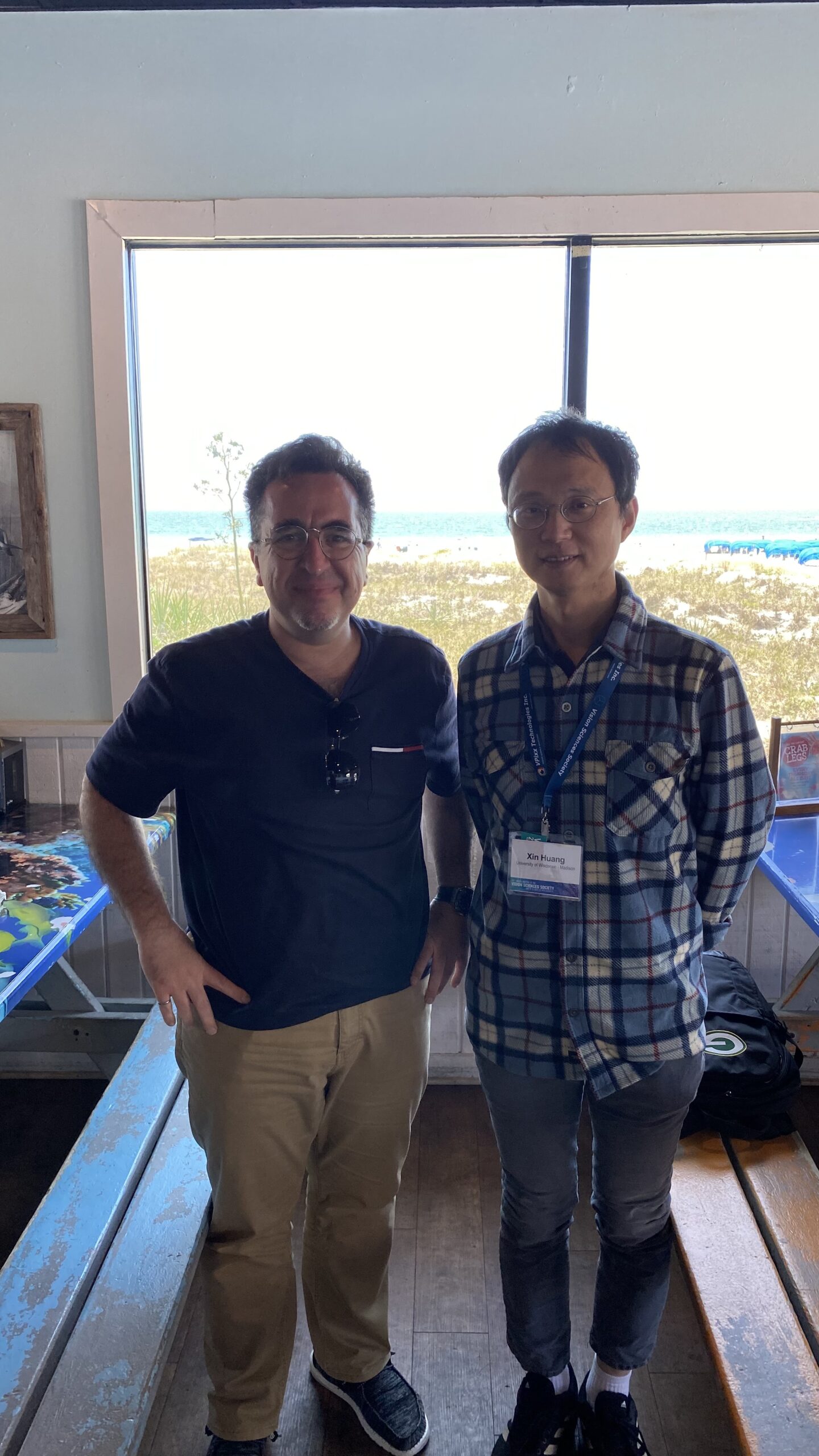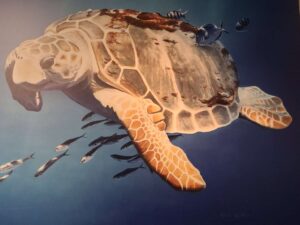
Our lab participated at this year’s annual meeting of the Vision Sciences Society (VSS), which took place in St. Pete Beach, Florida. We had several exciting presentations spanning a wide range of topics, and they were all very well received by the community!
Tong started it all out by giving an excellent talk at the Active Fovea Symposium, which took place on the first day of the conference. The symposium included several presentations using psychophysics and neurophysiology to study active visual processes in the fovea. Tong described a whole journey of neurophysiological work starting from the fovea and moving towards the periphery, and then moving back towards the fovea. The first part of her talk used real-time gaze stabilization techniques to demonstrate that generating a microsaccade causally changes peripheral visual sensitivity (both behaviorally and neuronally). This result validates, using a causal experimental technique, our earlier studies suggesting that covert attention shifts may be deterministically linked to individual microsaccade generation (also see here). Tong then switched to how foveal superior colliculus (SC) neurons receive information about the peripheral appearance of a saccade target, even before the image of the target lands in the fovea after the eye movement. This suggests that foveal SC neurons may signal trans-saccadic prediction errors as a means to stabilize perception across rapid eye movements. The Active Fovea symposium was a great success!
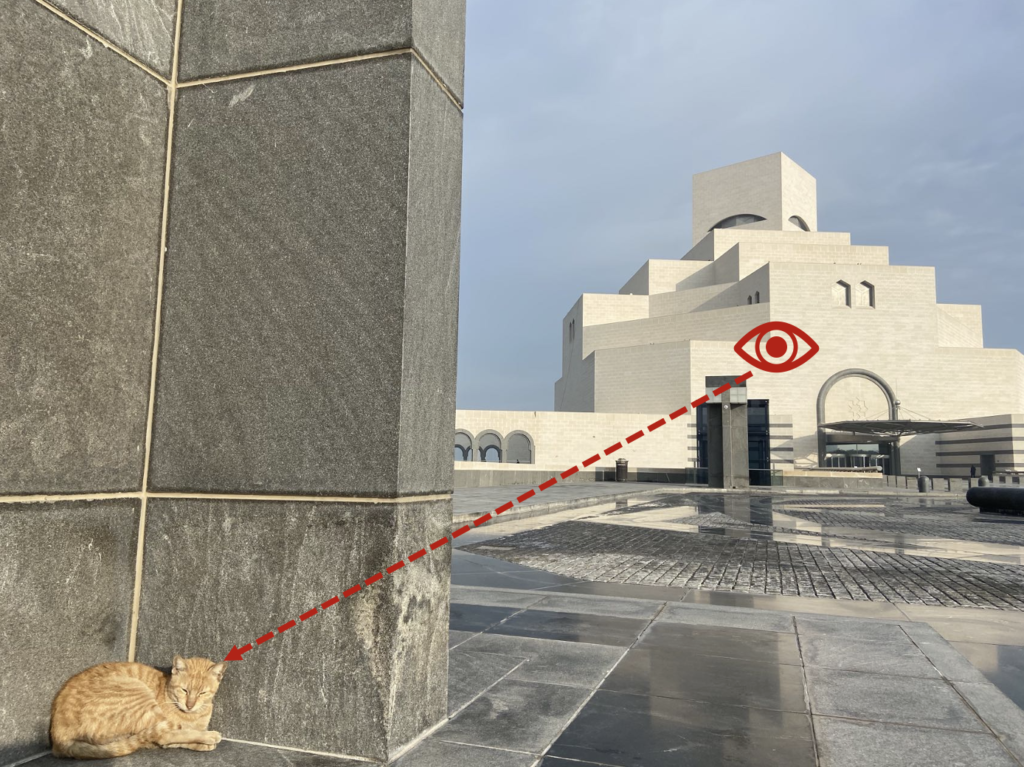
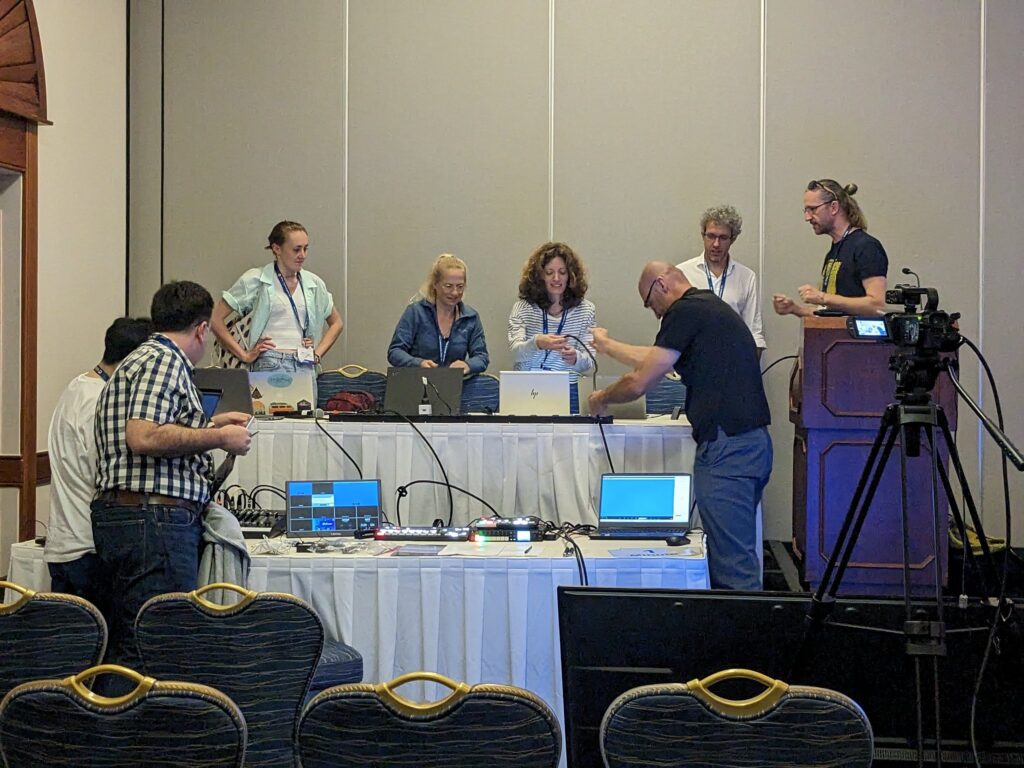
On the next day of the conference, we switched gears to monkey psychophysics. Matthias described our ongoing efforts to develop a psychophysical method to probe peri-saccadic perceptual mislocalization across saccades by monkeys. It has been known for very long that very brief probe flashes are grossly mislocalized perceptually by human subjects when the flashes are presented exactly around the time of rapid eye movements. This phenomenon is believed to reflect visual as well as motor processes that might attempt to bridge perception across saccades (and potentially give rise to Tong’s prediction error signals in the fovea described above). However, it is relatively difficult to have monkeys report the perceptual location of brief peri-saccadic flashes. Matthias did exactly that in his project, therefore setting the stage for him and other members of our lab to study the neurophysiology of peri-saccadic perception. He was able to show that monkeys exhibit two very important properties of peri-saccadic perceptual mislocalization: that mislocalization might depend on the visual appearance of the saccade target (as we predicted here), and that it is much stronger for upward saccades (as we predicted here). Thanks to Matthias, we are now in a great position to study peri-saccadic perceptual mislocalization at the neurophysiological level!
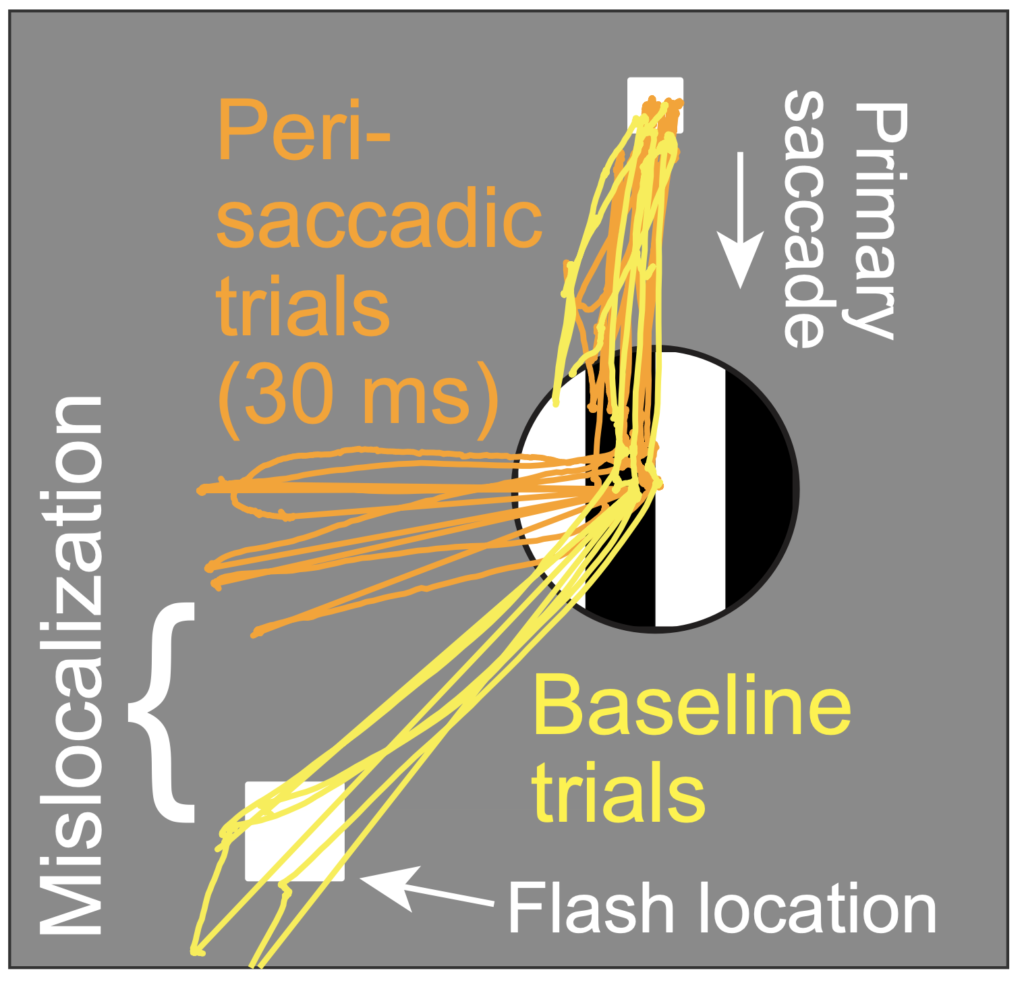
Yue Yu then described her neurophysiological results, comparing the visual properties of SC and primary visual cortex (V1) neurons. It is well known that the SC receives a lot of anatomical connections from V1 (see here for our recent review of this). It may thus be assumed that SC visual responses are merely inherited from those in V1. However, there has been no detailed comparison of the visual physiology of the two areas at all. We performed exactly this comparison. Intriguingly, there are many differences between SC and V1 visual responses. In our minds, one of the most important differences is that the SC seems to strongly alter its visual response latencies as a function of scene content, something that we did not observe in V1. In fact, we replicated our findings here and here that SC neurons exhibit a remarkable dissociation between visual response latency and visual response sensitivity. Our lab is actively continuing our exploration of the similarities and differences between SC and V1 visual properties.
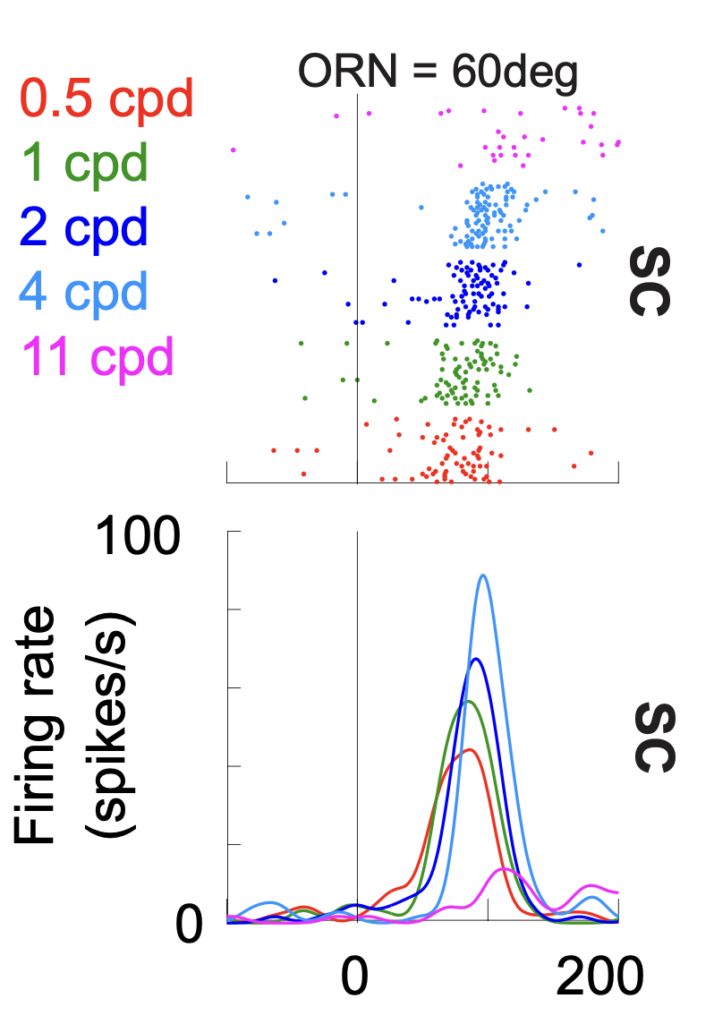
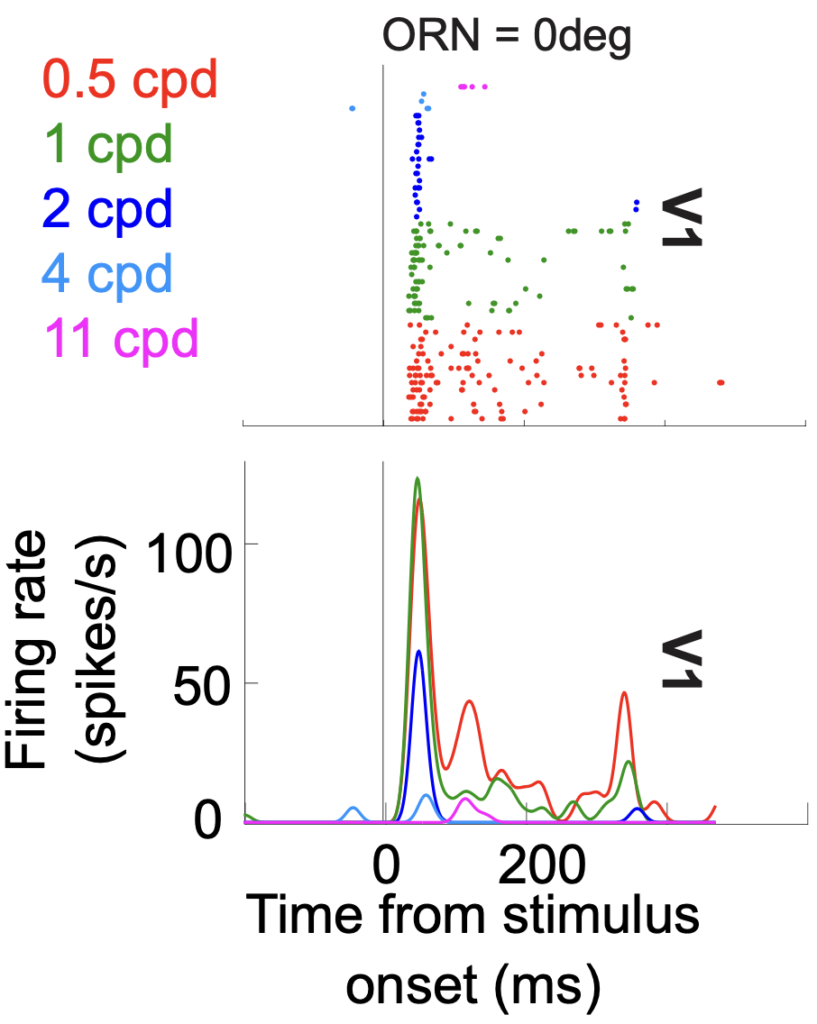
Last, but certainly not least, Carlotta gave an amazing talk towards the end of the conference, in which she related visual responses in the SC and V1 to trial-to-trial variability in saccadic reaction times. She discovered an interesting double dissociation between how SC and V1 visual responses, which might appear to be similar at face value, that is related to the effectiveness with which stimulus onsets trigger orienting responses. V1 neurons seems to jumpstart perceptual decision processes, whereas SC neurons favor integrating sensory evidence before committing to movement.
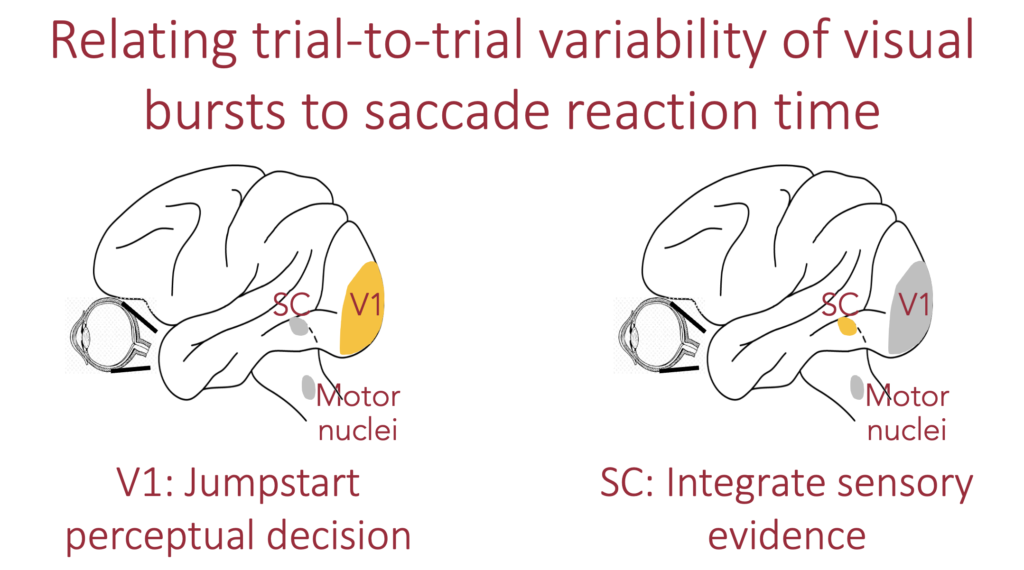
The conference was, of course, also a great opportunity to hear about the latest science in the field, and to also catch up with old friends and meet new ones.
Stay tuned in this space soon, because we will upload some videos providing a sampling of some of our presentations at the conference.

